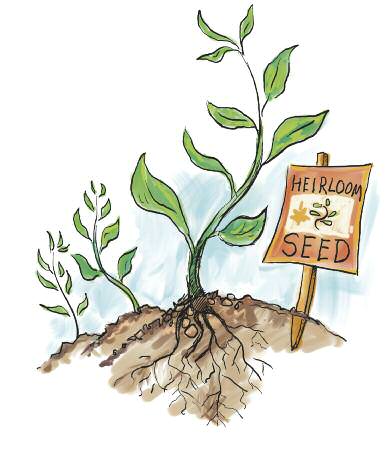cover
30 WAYS TO EAT, DRINK, GROW,
BUY, AND LIVE GREEN
Making a difference for the environment — locally and globally — is just a few steps away.
WRITTEN BY BARBARA TWITCHELL
ILLUSTRATIONS BY GREG BRADY
Every day, the media carry stories that bear witness to a planet under siege. Global warming, air pollution, genetically modified organisms, threatened species, floating trash islands, widening ozone holes, vanishing polar icecaps … the list goes on and on.
It often seems overwhelming and sometimes even hopeless. How does an individual help to effect change? How can one person stem a growing tide of environmental destruction? And would the actions of a single person really matter?
They do matter. Individually and collectively, we have power. Just think of the clout we wield with our shopping cart. A prime example: A decade ago, you would have really had to search for organic produce, eggs, or meat. Simply due to consumer demand, organic food products now are commonplace in our markets. Movements like these are fueled by individuals; enough of us eventually create a critical mass that changes the world.
So, just in time for Earth Day (April 22), edible Reno-Tahoe offers this list of 30 practical ways you can eat, drink, and grow more sustainably; be a more eco-conscious consumer; and reduce your carbon footprint.
IN THE GARDEN

1. Grow your own vegetables. Reduce food miles and your carbon footprint while providing wholesome produce for your family from your own backyard.
2. Plant heirloom varieties of seeds. Protect genetic diversity and prevent species extinction, with the added bonus of enjoying delicious and unusual produce.
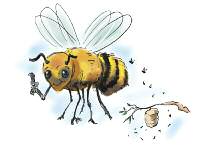
3. Be bee friendly. Bee populations are in decline, which threatens global agriculture. Protect these essential pollinators. Plant flowers that attract bees. Use natural insecticides that won’t harm beneficial insects.
4. Build a small greenhouse, hoop house, or cold frame to extend the growing season. Get all the benefits of gardening (see No. 1) multiplied by multi-seasonal bounty. Use indoor grow lights for early seed starts and year-round herbs.
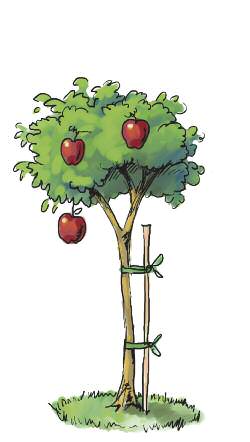
5. Plant fruit and nut trees and berry bushes. These perennial food sources provide nutritional diversity while also helping to cool the earth, clean the air, and reduce the carbon footprint.
6. Conserve water. Install a drip irrigation system in your garden. It uses on average about 50 percent less water than a sprinkler (and you’ll have less weeding to do). If you’re handy, you can do it yourself. Need help or advice? Contact the master gardener program at the University of Nevada Cooperative Extension (775-336-0265), or talk to your local nursery.

7. Hire goats as weeding machines. Have a sizeable yard and a lot of weeds? Locally, you can hire goat farmers to lend out their four-legged foliage busters to provide 100 percent organic vegetation control and convert flora to fertilizer. Check out Weed Warriors, based in Fallon (Goatdiva@yahoo.com or 775-427-8210).
8. Compost. One-third of the waste in landfills actually is compostable material. Backyard composting not only reduces the trash burden on our landfills, but it also converts waste into a valuable resource for your yard and garden.
Here is a basic guide for converting trash into black gold (aka humus):
• DO start your compost on bare earth so worms and beneficial organisms can migrate into the pile.
• DO compost fruit and vegetable scraps, garden waste, leaves, grass clippings, coffee grounds and filters, tea bags, newspaper and shredded paper (no glossy paper or colored inks), cardboard, straw, wood ash, dryer lint, egg shells, livestock manure (herbivores only), and pine needles (in limited quantities).
• DO add both moist and dry materials (e.g., alternate kitchen scraps with shredded paper, straw, leaves, wood ash, etc.).
• DO keep the pile moist and cover to retain heat created by decomposition.
• DO turn every few weeks, with a shovel or pitchfork, to aerate the pile.
• DO NOT compost meat, fish, or bones (as these attract pests and create odors), perennial weeds, diseased plants, and pet (carnivore) manure.
IN THE KITCHEN
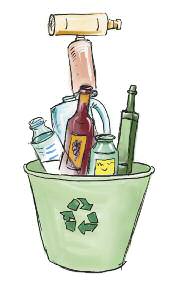
9. Recycle plastic, paper, and glass. This simple act reduces landfill waste and reuses resources.
10. Keep a lidded pre-compost container on your kitchen counter or under the sink. This is a convenient way to collect fruit and vegetable scraps during food prep. Toss contents on the compost heap.

11. Use healthier cookware. Nix Teflon and aluminum, due to toxic fumes and leaching concerns. The jury still is out on anodized aluminum. Give the thumbs up to stainless steel, cast iron, glass, stoneware, and ceramics.
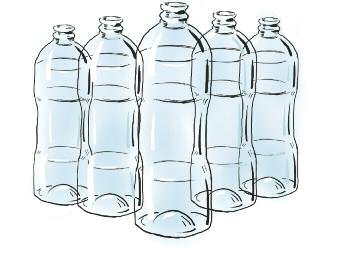
12. Use glass containers to store leftovers and liquids. Glass never wears out, and, unlike plastic, it is 100 percent recyclable and can be recycled an unlimited number of times without losing its integrity. Also, unlike plastic, glass will neither absorb flavors and odors nor leach chemicals into foods.
13. Use honey instead of sugar. Because honey is minimally processed, and in the case of raw honey completed unprocessed, it retains some organic protein, enzymes, and vitamins that are destroyed in processed sugar. Also, honey has certain beneficial antioxidant and antimicrobial properties not present in sugar. Better yet, use local honey. Support your local economy while reducing your carbon footprint. (Consult your physician before giving honey to a young child.)
14. Recycle your coffee grounds. There are many creative and useful ways to repurpose used coffee grounds: Add them to the compost pile, make houseplant or rose fertilizer, use as a refrigerator deodorizer, rub on hands to remove food odors, deter cutworms and ants from entering the garden, to name a few ideas. Check out http://www.Tellinitlikeitis.net/2012/02/recycling-coffee-25-ways-to-recycle-coffee-grounds.html for more great ideas.
15. Make more home-cooked, made-from-scratch meals. This means less reliance on highly processed, convenience foods and more on fresh ingredients, which are far better for your family’s health and the environment. Can’t cook? Consider taking lessons. Check out Nothing To It Culinary Center (http://www.Nothingtoit.com, 775-826-2628).
16. Don’t buy disposable plastic water bottles. Thirty billion plastic water bottles are sold in the U.S. annually. Of those, about 22 billion make their way into our landfills at a rate of 60 million each day. And as they’re non-biodegradable, this presents a huge and literally never-ending problem. Invest in a reusable, stainless-steel water bottle that you fill at your sink. Just a simple turn of the tap can have a huge impact by reducing food miles, carbon footprint, and waste products.
17. Don’t waste food. Food is the single-largest source of waste in municipal landfills. Americans throw away an astounding 35 million tons of food each year. (See sidebar: A shameful truth)
IN THE MARKETPLACE
18. Buy local whenever possible. The best way to support local growers is to buy directly from them through farmers’ markets, CSAs, and farm stands. There are more than 5,200 farmers’ markets in the nation and more than 30 in our region. Also, patronize businesses that use and sell local products. Check out edible’s Eat Local Guide in each edition, and the Farmers’ Market and CSA Guides in the upcoming summer edition (all listings also are available at https://ediblerenotahoe.com).
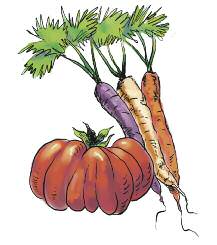
19. Buy heirloom, organic, naturally grown items. Higher demand encourages more production and availability of this eco-friendly produce.
20. Challenge yourself to use what’s at the market. Diversify your palate. Try unusual items. Take advantage of seasonal produce.
21. Be willing to accept cosmetic imperfections in produce. Heirloom varieties won’t look like the perfect red globes of commercial tomatoes, but they will taste much better. Organic and naturally grown fruits and vegetables may look less than perfect, but they are delicious and are farmed without toxic chemicals.
22. Be conscious of packaging. Buy products with the least amount of packaging. Buy loose bunches of vegetables, not bagged or boxed.
23. Bring your own reusable grocery bags or opt for paper rather than plastic.

24. Buy local eggs. Patronize local egg farmers to ensure you have the freshest eggs from happy hens. If you buy at the grocery store, know what labels mean (e.g., organic, free range, cage free, etc.). These labels may not always be as healthy or humane as they may sound. Support producers that adhere to humane standards. Commercial producers that do will proudly display that practice on their cartons.
25. Be a smart carnivore. Buy local, grass-fed, organic, humanely raised meat. (For details, see our Spring 2014 Special Meat Issue at https://ediblerenotahoe.com).
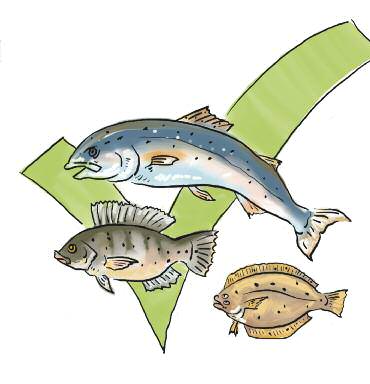
26. Eat sustainable seafood. Ensure the fish you are buying is being raised/harvested in a sustainable manner. Here are some ideas to help you determine that:
• Eat fish low on the food chain, as they are more likely to be sustainable.
• Select fish that grow quickly for the same reason.
• Read labels and ask questions to determine counties of origin, whether they were farmed or wild, and how they were caught.
• Look for logos of organizations with rigorous sustainability standards, such as the Friend of the Sea or Marine Stewardship Council.
• Check websites that track sustainability, such as Monterey Bay Aquarium’s Seafoodwatch.org. This website even offers a seafood rating app for iPhones and Androids, and a handy pocket guide downloadable to any mobile device.
• Buy from a trusted local vendor who can guide you on selecting sustainable fish, such as Sierra Gold Seafood market in Sparks (http://www.Sierragoldseafood.com).
• Patronize restaurants that serve fresh, responsibly harvested, sustainable seafood. If they don’t post that information on their menus or websites, ask. Those that buy responsibly will welcome your questions.
27. Buy better coffee and tea. Buy organic, fair-trade, direct-trade products. Davidson’s Organics in the Reno-Sparks area (http://www.Davidsonstea.com) and Minden’s Alpen Sierra Coffee Co. (http://www.Alpensierracoffee.com), with products sold in retail outlets throughout edible’s Nevada and California circulation areas, are two local vendors that offer these quality items.
28. Cut out processed foods. These items are loaded with sugars, salts, corn and corn-based products, GMOs, and preservatives. Not only do these pose health concerns, but, also, purchasing them enriches the coffers of big food corporation leaders who care more about profits than nutrition or the environment.
29. Read labels! You can learn a lot about where and how your food was raised and processed so you can make informed choices that are best for your health and the health of the environment.
30. Encourage your favorite eateries to use biodegradable food containers. The big NO here is Styrofoam. It’s a petroleum product that releases dangerous pollutants during production and, according to Earth Resource Foundation, has been classified by the EPA as the “fifth largest creator of hazardous waste.” This nonbiodegradable trash lasts forever and essentially can’t be recycled. There also are health concerns regarding chemicals leaching into foods. Why stop there? Disposable cups, utensils, bowls, and plates also add huge volumes of nonbiodegradable waste to our landfills. An increasing number of alternatives for all of these products can now be found, which are made of paperboard or plant-based compostable plastics. Voice your concern to restaurants that use these products. Suggest that they switch to biodegradable food containers and wares.
Reno writer Barbara Twitchell is passionate about going green and practices many of the suggestions on this list. Researching this article inspired her to add a few more ideas to her green routine. She hopes it inspires edible readers to do the same.
EXTRAS
A shameful truth
We offer suggestions on how to curb our huge rates of food waste.
American food production is at an all-time high, yet one out of every six people in this country is food insecure — a fancy way of saying they generally don’t know where their next meals will come from and often send their kids to bed hungry.
How is that possible in this land of plenty? The answer lies rotting in our landfills.
A startling 44 percent of the food produced or imported for consumption in this country ends up in the trash. Need a visual? Every day, Americans waste enough food to fill Pasadena’s famous Rose Bowl football stadium. In the few days between Thanksgiving and New Year’s, we trash roughly five million tons of food, enough to fill 125,000 18-wheelers that would stretch from Chicago to Seattle.
There are lots of reasons for this food waste — some of it is business related and outside of our control. But 40 to 50 percent of the waste is generated by us, the consumers. And we do have control over that. Here are a few ideas that each of us can incorporate into our lives to combat this shameful waste, starting in our own kitchens:
• Plan meals for the week and add ingredients to your shopping list.
• Don’t over-purchase. Buy what you need, and eat what you buy.
• Eat the oldest food first.
• Designate a shelf in the refrigerator for items that need to be eaten before spoiling. Check that first when you look for something to eat or cook.
• Understand labels. Best-by, sell-by, and use-by dates generally have to do with optimal shelf life, not food safety. There’s a lot of wiggle room built into these dates. Many people throw out food that’s still good, simply because of the arbitrary date on the label.
• Buy local produce. It’s fresher and will have a longer life span in your home.
• Keep fruits and vegetables stored properly to maintain freshness.
• Instead of refrigerating, freeze leftovers for later use. It’ll extend their shelf life.
• Use all of an item whenever possible (e.g., buy whole chicken — after consuming meat, use the carcass to make stock or soup; with beets, the roots can be boiled or roasted and the tops used for salads).
• Can, freeze, dehydrate, pickle, ferment, and preserve any garden surplus.
• Share garden surpluses with friends and neighbors or donate them to organizations that feed the hungry.
• Volunteer to glean surplus fruits and vegetables at neighbors’ yards and local farms and donate them to food banks and soup kitchens.
• Organize a food-recovery program in your area. This would take food to food pantries, shelters, etc. from grocery stores and restaurants that still is edible but cannot be sold. Expired foods can be taken to small farms to feed animals.
RECIPE
Shrimp Provençal
(courtesy of Sierra Gold Seafood in Sparks, also featured on Sierragoldseafood.com. Serves 3, “or 2 with big appetites!” co-owner Cindy Crowell says.)
2 tablespoons olive oil
1 pound (16 to 20) wild-caught Mexican shrimp (available in Sierra Gold’s store), peeled and deveined
½ cup diced onion
3 Roma tomatoes, diced (1 cup)
2 garlic cloves, chopped
¼ cup chardonnay
1 teaspoon fresh thyme, chopped
1 tablespoon fresh basil, chopped
Salt and pepper, to taste
Heat olive oil in nonstick skillet over medium-high heat. Add shrimp and cook, while tossing, for one minute. Add onions, tomatoes, and garlic, and continue cooking until shrimp are just opaque in center and onions are translucent. Deglaze with chardonnay and continue cooking for about one minute. Add thyme and basil, and season with salt and pepper. Serve with brown rice or rice pilaf.
